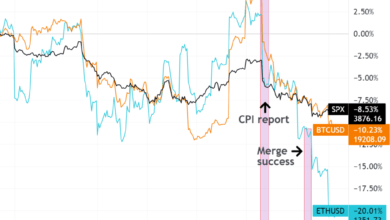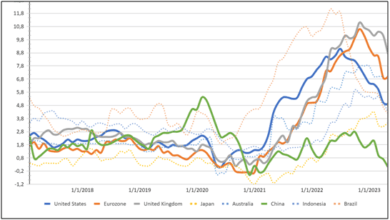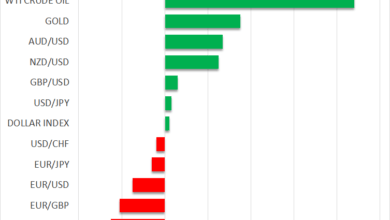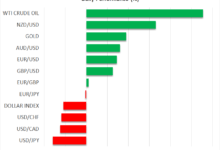Leading Economic Index Misses Again: Are Recession Forecasts Broken?
2024.02.22 10:48
It was probably inevitable, but it’s striking nonetheless. The once-reliable US Leading Economic Index (LEI) has been signaling a US recession for more than a year but the economy has continued to expand.
It’s a teachable moment in recession nowcasting and forecasting, but not surprising. The main takeaway, again: every recession indicator fails, eventually.
Why? It’s the nature of recessions. Every downturn is different, the byproduct of a unique set of factors at a given point in time.
There are similarities, but not enough so that you can easily select a handful of indicators that worked the last time and assume they’ll remain forever relevant in signaling future contractions.
The lesson, which I’ve been preaching for years – and is the core principle for The US Business Cycle Risk Report – is that the closest mere mortals can come to a “reliable” recession nowcasting/forecasting methodology is to aggregate signals from multiple, complementary models.
But even combining models doesn’t suffice, if you pick a few and assume you’re done.
There’s always room for improvement, in part because the economy is continually evolving, which may render a seemingly robust modeling effort less than robust at some point.
Keeping an eye open for new ways to profile the business cycle, in other words, is a key part of the analytics.
For example, as I , aggregating state coincident indexes from the bottom up offers a potentially new and useful tool for enhancing existing recession nowcasting/forecasting analytics.
Meanwhile, what happened to the LEI? Ed Yardeni at YardeniQuicktakes.com sums up the problem:
The Conference Board, which compiles the two indexes, backed off its recession forecast.
A spokesperson for the group said: “While the declining LEI continues to signal headwinds to economic activity, for the first time in the past two years, six out of its 10 components were positive contributors over the past six-month period (ending in January 2024).”
She added. “As a result, the leading index currently does not signal recession ahead. While no longer forecasting a recession in 2024, we do expect real GDP growth to slow to near zero percent over Q2 and Q3.”
Rather than admit that the LEI has been misleading, The Conference Board tweaked the rule of thumb, which had been that three consecutive declines in the LEI signaled a looming recession.
Now it’s how many of its components are falling over a six month period. In our opinion, the LEI is due for a product recall. It needs to be fixed to give more weight to the services sector. Here is January’s LEI contributions chart:
Leading and Coincident Economic Indicators
To be fair, the economy in the post-pandemic period has surprised on multiple fronts.
My efforts at trying to screen out the noise from the signal have been affected, too, albeit temporarily, in late 2022, when it appeared that the US was on the verge of slipping into an NBER-defined recession.
But by the spring of 2023, the signs were accumulating that the recession warning, which , was fading.
Notably, the cornerstone of The US Business Cycle Risk Report – the Composite Recession Probability (CRPI) Index, which aggregates several business-cycle benchmarks — had pulled back from a moderate but not decisive recession warning in early 2023. Here’s how CRPI stacked up in mid-April 2023:
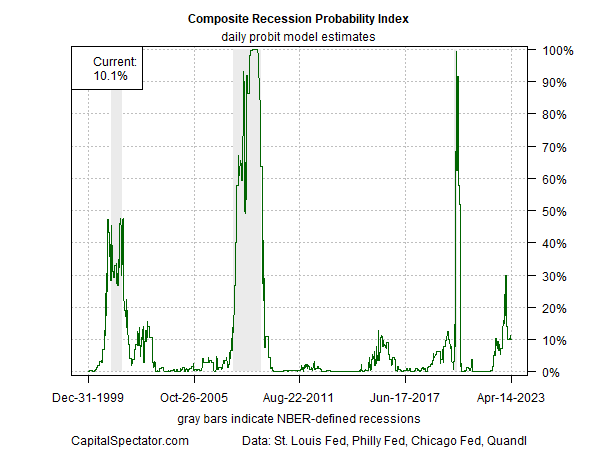
CRPI Probit Model Estimates
For comparison, here’s CRPI’s reading at last week’s close (Feb. 16):
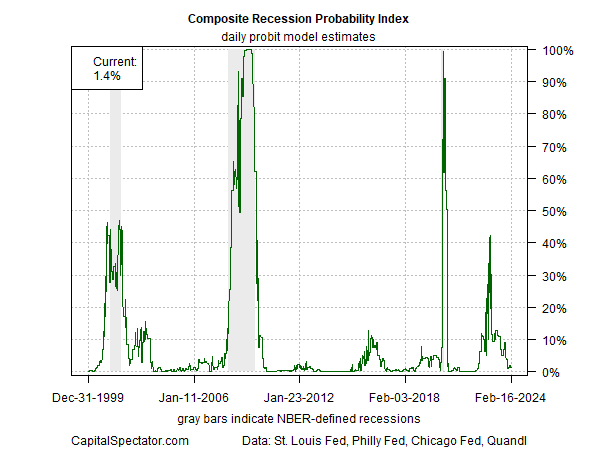
CRPI Daily Probit Model Estimates
To be clear, there’s never 100% certainty in real time about estimating recession risk. It’s always possible that some new twist has rendered even the best of methodologies null and void at times.
The good news is that there’s a productive path to reduce the risk of failure and it starts by carefully diversifying the indicators that inform your analysis.
For those who ignore this rule, a trap awaits: Every business-cycle indicator fails eventually.
Fortunately, there’s a solution via the observation that there’s strength in numbers. Although any one recession indicator will likely fail at times, it’s highly unlikely that every indicator will fail simultaneously.


